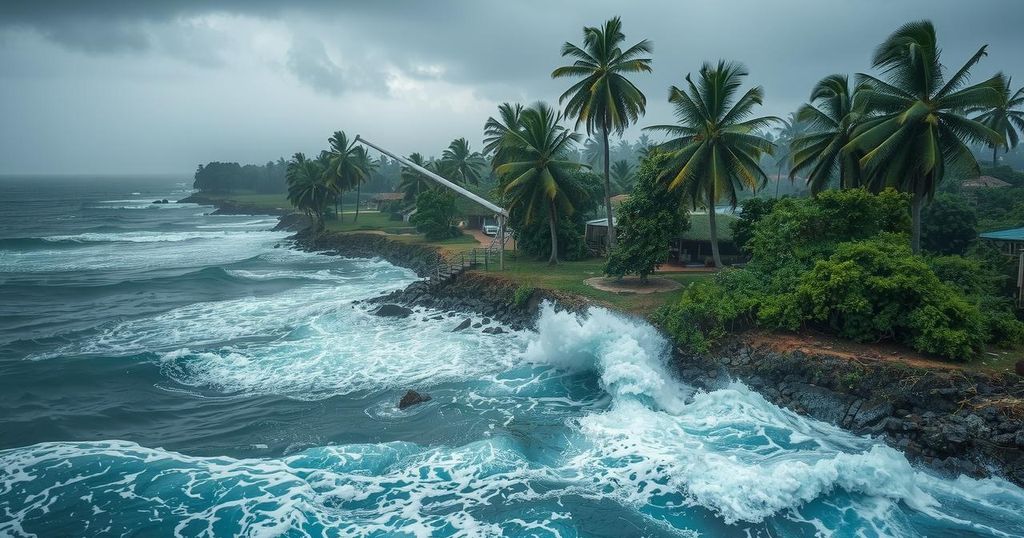Tropical Storm Dikeledi Makes Landfall in Mozambique After Impacting Madagascar
Tropical Storm Dikeledi struck northern Mozambique after causing deaths in Madagascar and flooding in Mayotte. It brought destructive winds and heavy rains, prompting warnings from officials. President Nyusi urged residents to take safety precautions. The storm highlights increased cyclone activity linked to warm sea temperatures and global warming.
Tropical Storm Dikeledi made landfall in northern Mozambique on Monday, following its impact on Madagascar, where it resulted in at least three fatalities and led to significant flooding in the French territory of Mayotte. The storm intensified as it approached Mozambique’s Nampula region, bringing with it hazardous winds and heavy rainfall. The French weather agency, Meteo-France, reported that Dikeledi could produce up to 200 millimeters of rain within 24 hours and wind gusts reaching 180 kilometers per hour.
In light of these developments, President Filipe Nyusi urged citizens in vulnerable areas to take immediate safety precautions, advising them to seek shelter and ensure they have sufficient supplies of food and water. He emphasized the importance of heeding warnings from authorities and remaining in designated safe zones until further notice. Amidst rising concerns, the National Office for Risk and Disaster Management in Madagascar confirmed the casualties caused by the storm, which had affected the island with destructive winds and heavy precipitation. Meteo-France also indicated the possibility of Dikeledi impacting Madagascar’s southwestern coast as it continues its trajectory southward.
This cyclone season typically spans from November to March, characterized by heightened storm activity due to warm surface water temperatures in the region, which are around 30 degrees Celsius (86 Fahrenheit). This condition exacerbates the intensity of storms and aligns with observations of similar phenomena in other oceanic regions affected by global warming.
The phenomenon of cyclones in the Indian Ocean occurs primarily between November and March, driven by climatic conditions such as elevated surface water temperatures. In the current season, the temperatures have approached 30 degrees Celsius, contributing to heightened cyclone activity. Such storms, including Dikeledi, pose serious threats to coastal regions, resulting in loss of life, significant property damage, and necessitating emergency responses from governmental bodies.
In conclusion, Tropical Storm Dikeledi has precipitated grave concerns for northern Mozambique and the surrounding regions, following its earlier devastation in Madagascar. With the storm intensifying and emergency measures being implemented by authorities, the focus remains on ensuring public safety and preparedness. The impacts of climate change continue to intensify cyclone patterns, necessitating heightened alertness during these seasonal storms.
Original Source: www.barrons.com




Post Comment